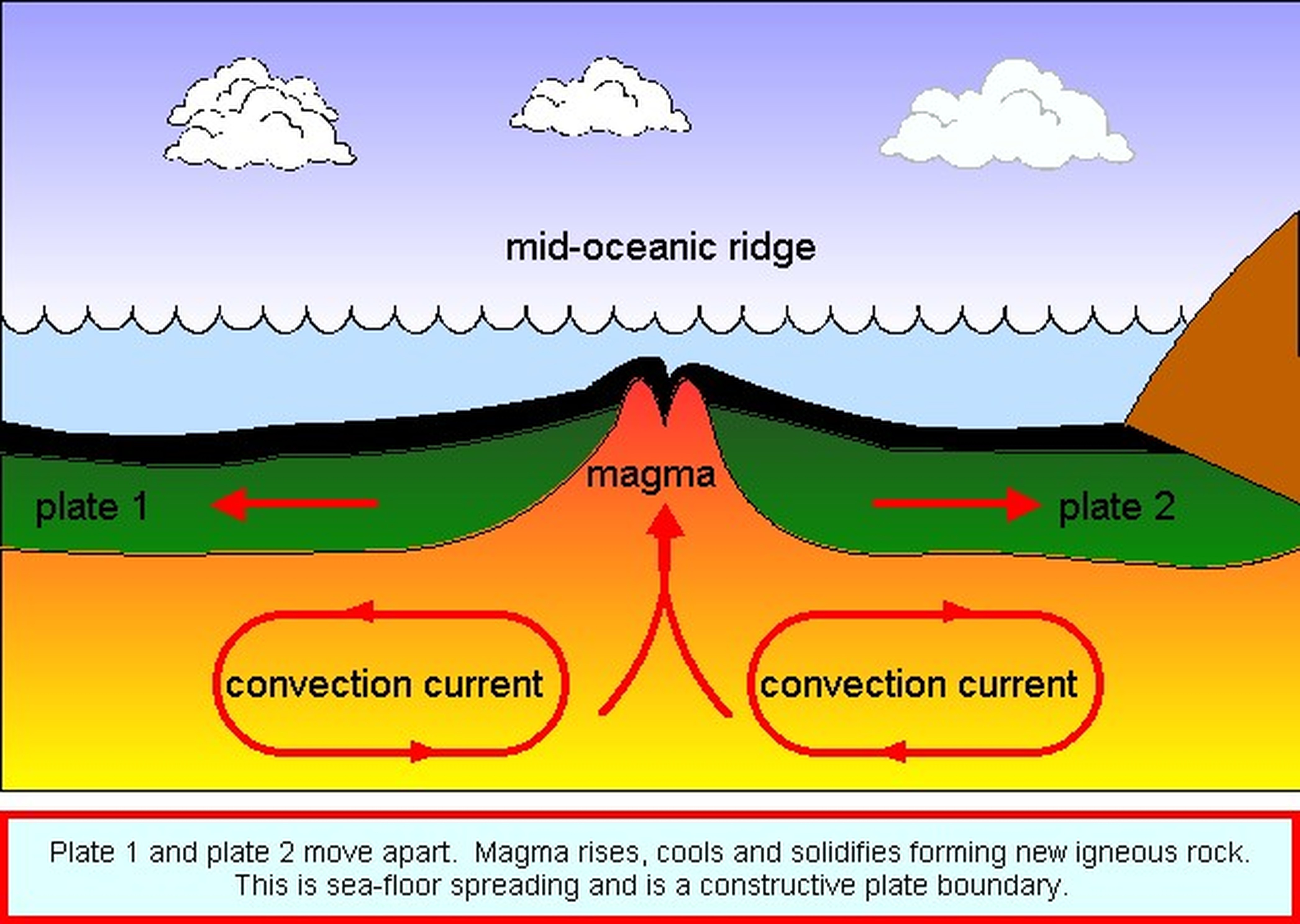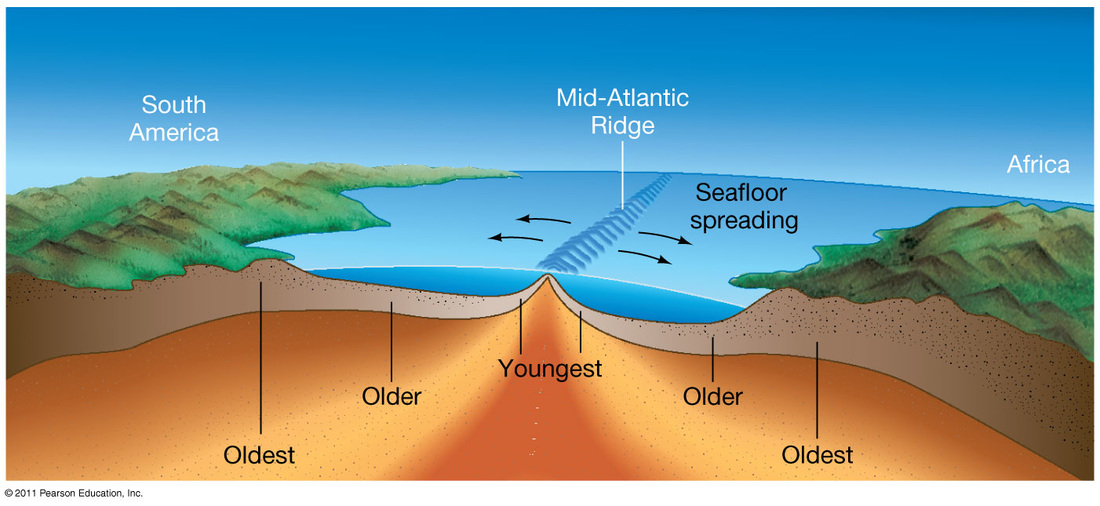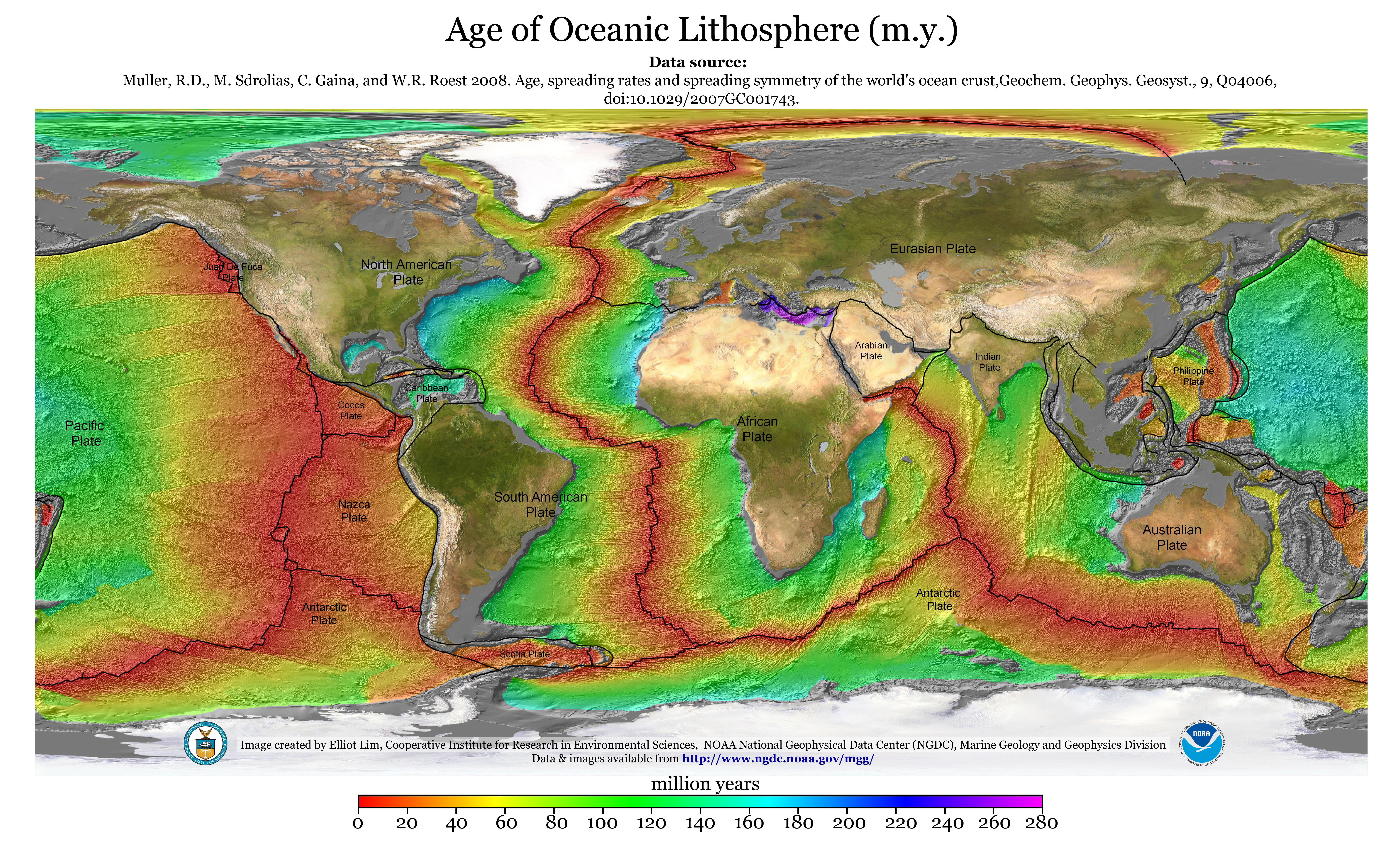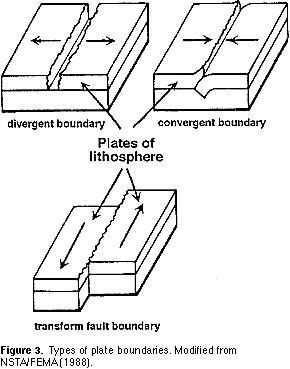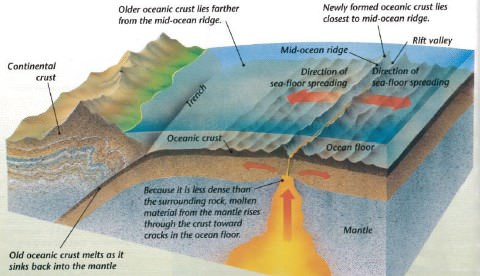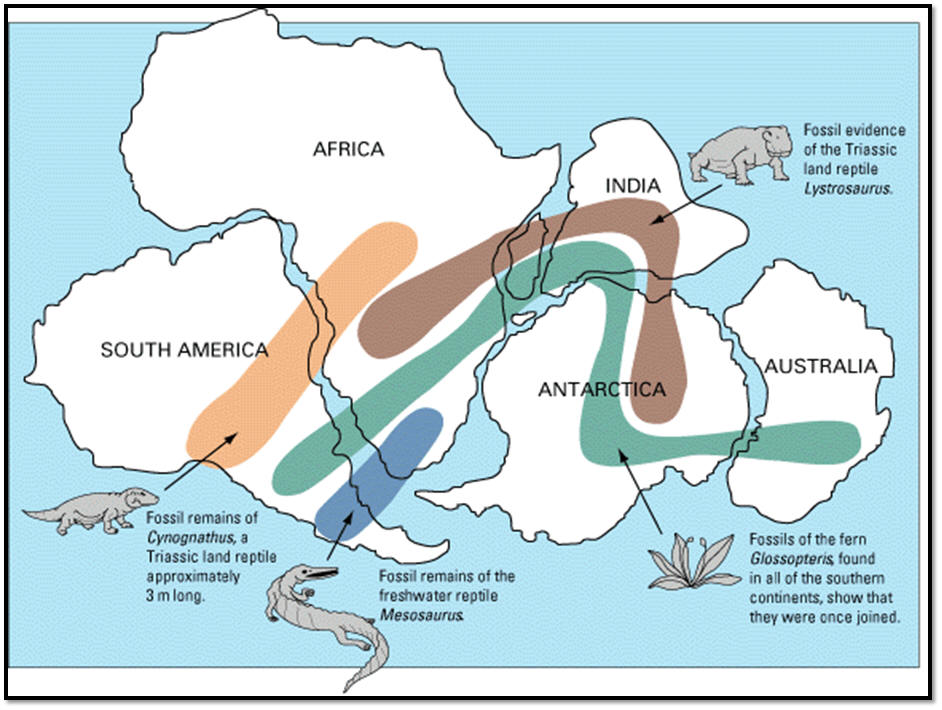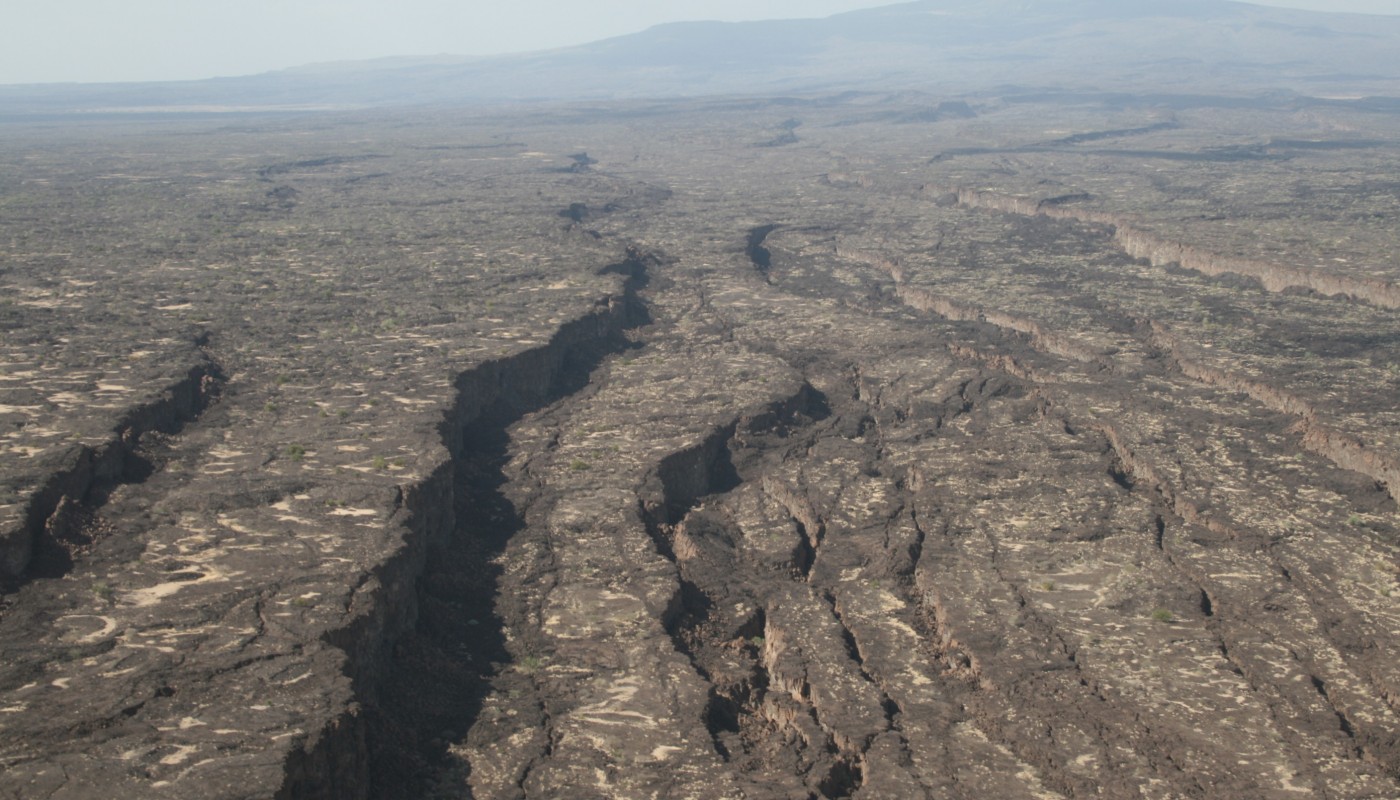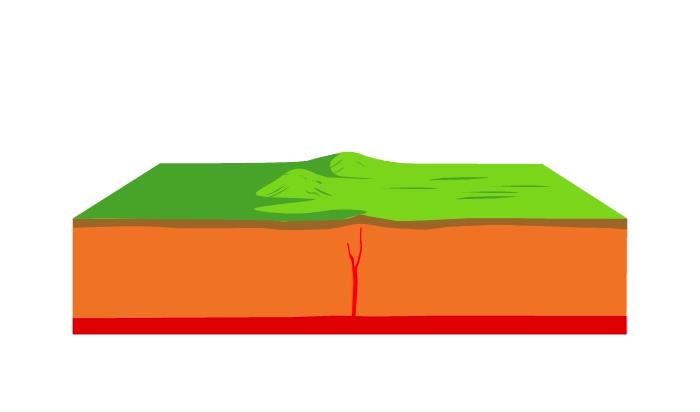Plate tectonics may seem like a relatively simple topic but can actually be very complex when taking into account all of the aspects of liquid and solid earth.
Sea floor spreading occurs at what plate boundary.
A spreading center includes a seismically active plate boundary zone a few kilometers to tens of kilometers wide.
Seafloor spreading occurs at divergent plate boundaries.
Spreading centers end in transform faults or in overlapping spreading center offsets.
If sea floor spreading operates the youngest oceanic crust should be found at the ridges and progressively older crust should be found in moving away from the ridges towards the continents.
These age data also allow the rate of seafloor spreading to be.
Seafloor spreading theory that oceanic crust forms along submarine mountain zones and spreads out laterally away from them.
The less dense material rises often forming a mountain or elevated area of the seafloor.
Plate tectonics plate tectonics seafloor spreading.
Seafloor spreading is plate tectonics.
As upwelling of magma continues the plates continue to diverge a process known as seafloor spreading.
Samples collected from the ocean floor show that the age of oceanic crust increases with distance from the spreading centre important evidence in favour of this process.
Spreading rates average 5 cm year.
Seafloor spreading occurs at spreading centers distributed along the crests of mid ocean ridges.
By combining the sea floor spreading theory with continental drift and information on global seismicity the new theory of plate tectonics became a coherent theory to explain crustal movements.
The reason we have plate tectonics is because of a viscous partially molten liquid mantel or asthenosphere which lies just beneath the solid crust or lithosphere.
Sea floor spreading the mid ocean ridge has an elevated position on the seafloor because it is formed from relatively hot igneous rocks.
The discovery of such magnetic stripes provided powerful evidence that sea floor spreading occurs.
The discovery of marine magnetic anomalies was so important to the theory of seafloor spreading because they passive continental coastlines that occur within the interior of a tectonic plate are called margins.
As tectonic plates slowly move away from each other heat from the mantle s convection currents makes the crust more plastic and less dense.
Sea floor spreading a process known as seafloor spreading occurs where magma from the mantle wells up into the divergent boundary forming new basaltic seafloor.
The age of the sea floor also supports sea floor spreading.

